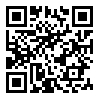Volume 22, Issue 2 (JIAEEE Vol.22 No.2 2025)
Journal of Iranian Association of Electrical and Electronics Engineers 2025, 22(2): 145-156 |
Back to browse issues page
Download citation:
BibTeX | RIS | EndNote | Medlars | ProCite | Reference Manager | RefWorks
Send citation to:



BibTeX | RIS | EndNote | Medlars | ProCite | Reference Manager | RefWorks
Send citation to:
Moosavi Khansari M. Simulation and estimation of the capacity of four qubit GHZ state superdense coding protocol on the platform of IBM Quantum Computer. Journal of Iranian Association of Electrical and Electronics Engineers 2025; 22 (2) :145-156
URL: http://jiaeee.com/article-1-1645-en.html
URL: http://jiaeee.com/article-1-1645-en.html
Department of Physics, Faculty of Basic Science, Ayatollah Boroujerdi University, Boroujerd
Abstract: (696 Views)
In this article, an innovative protocol for ultra-dense quantum coding based on a four-qubit GHZ state has been developed. This novel protocol is designed to maximize the utilization of quantum systems' capacities and has been comprehensively examined from a theoretical perspective. In this regard, the coding capacity of the protocol has been compared with the Holevo bound, which determines the maximum information extractable from a quantum system. To validate the protocol, simulations were conducted using quantum computing software. For practical evaluation, the protocol was implemented on the IBM Quantum Computer, allowing researchers to compare theoretical and practical results. The experimental results indicated differences from the theoretical predictions; while the theoretical results assigned each state a 50% probability, in practical conditions, these values shifted to 50.19531% and 49.80469%. These discrepancies stem from environmental noise and qubit-environment interactions, which represent one of the fundamental challenges in quantum computing. This research not only addresses these challenges but also emphasizes the importance of finding solutions to reduce noise and improve measurement accuracy. Bar charts were used to display the results, providing an effective tool for visually presenting data and facilitating more precise analyses. The use of these charts simplifies the understanding of patterns and discrepancies within the data, enabling researchers to identify and analyze more details. Overall, this study, by offering a new protocol and meticulously examining the challenges and potentials of quantum technologies, makes a significant contribution to advancing knowledge in the field of quantum computing. These achievements can pave the way for further advancements in this emerging technology.
Type of Article: Research |
Subject:
Communication
Received: 2023/09/24 | Accepted: 2024/12/22 | Published: 2025/08/15
Received: 2023/09/24 | Accepted: 2024/12/22 | Published: 2025/08/15
References
1. [1] Sadeghzadeh S, houshmand M, Aghababa H, Koochakzadeh M. Quantum Controlled Teleportation of three-qubit GHZ states using Ten-Qubit Channel. Journal of Iranian Association of Electrical and Electronics Engineers 2020; 17 (1) :103-114
2. [2] Forghani B, Houshmand M, Bolokian M. Secure Quantum Dialogue Under the Collective Noise Targeting to Improve Efficiency. Journal of Iranian Association of Electrical and Electronics Engineers 2023; 20 (3) :67-80 [DOI:10.52547/jiaeee.20.3.67]
3. [3] C. H. Bennett and S. J. Wiesner, "Communication via one- and two-particle operators on Einstein-Podolsky-Rosen states", Phys. Rev. Lett. 69, 2881 (1992). [DOI:10.1103/PhysRevLett.69.2881]
4. [4] V. N. Gorbachev, A. I. Trubilko, A. I. Zhiliba, and E. S. Yakovleva, "Teleportation of entangled states and dense coding using a multiparticle quantum channel", eprint quant-ph/0011124. [DOI:10.48550/arXiv.quant-ph/0011124]
5. [5] J. L. Cereceda, "Quantum dense coding using three qubits", eprint quant-ph/0105096. [DOI:10.48550/arXiv.quant-ph/0105096]
6. [6] K. Mattle, H. Weinfurter, P. G. Kwiat, and A. Zeilinger, "Dense Coding in Experimental Quantum Communication", Phys. Rev. Lett. 76, 4656 (1996). [DOI:10.1103/PhysRevLett.76.4656]
7. [7] J.W. Pan, M. Daniell, S. Gasparoni, G. Weihs, and A. Zeilinger, "Experimental Demonstration of Four-Photon Entanglement and High-Fidelity Teleportation", Phys. Rev. Lett. 86, 4435 (2001). [DOI:10.1103/PhysRevLett.86.4435]
8. [8] Z. Zhao, Y.A. Chen, A.N. Zhang, T. Yang, H. J. Briegel, and J.W. Pan, "Experimental demonstration of five-photon entanglement and open-destination teleportation", Nature 430, 54 (2004). [DOI:10.1038/nature02643]
9. [9] D. Bruss, G. M. D'Ariano, M. Lewenstein, C. Macchi- avello, A. Sen(De), and U. Sen, "Distributed quantum dense coding", eprint quant-ph/0407037.
10. [10] M. AbuGhanem, "IBM Quantum Computers: Evolution, Performance, and Future Directions", arXiv preprint arXiv:2410.00916, 2024
https://doi.org/10.1007/s11227-025-07047-7 [DOI:10.48550/arXiv.2410.00916]
11. [11] A. Javadi-Abhari, et al. "Quantum computing with Qiskit", arXiv preprint arXiv:2405.08810 (2024) [DOI:10.48550/arXiv.2405.08810]
12. [12] TH. Vu, VTD. Le, HL. Pham, QC. Nguyen, Y. Nakashima, "FQsun: A Configurable Wave Function-Based Quantum Emulator for Power-Efficient Quantum Simulations", arXiv preprint arXiv:2411.04471, 2024 [DOI:10.48550/arXiv.2411.04471.]
Send email to the article author
| Rights and permissions | |
 |
This Journal is an open access Journal Licensed under the Creative Commons Attribution-NonCommercial 4.0 International License. (CC BY NC 4.0) |






